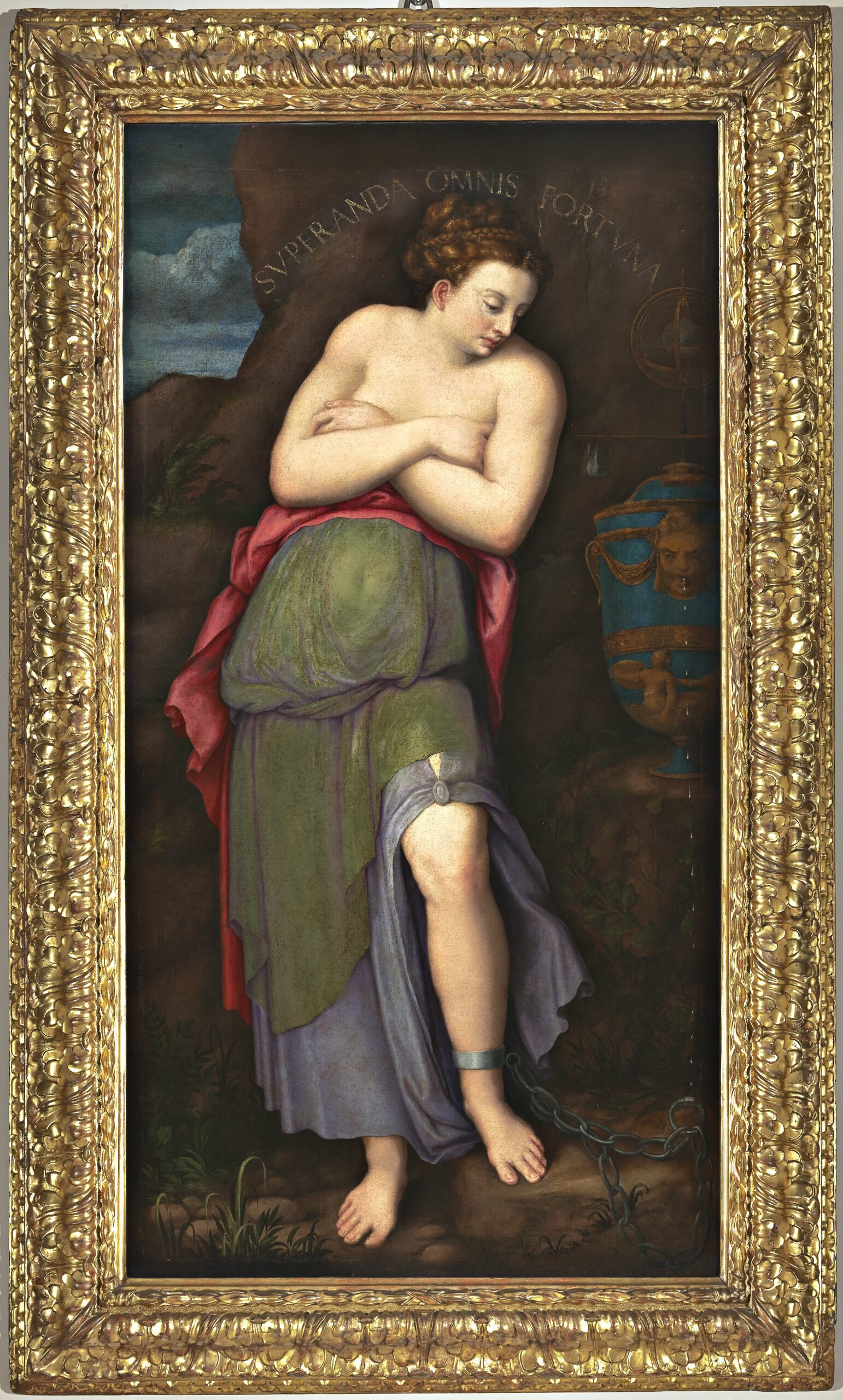The canvas was commissioned by Ercole II to Camillo Filippi around 1553 for the ‘Room of Patience’ that the Duke had built around the tower of Santa Caterina in the heart of the Castello Estense, during work made necessary after the damage caused by a devastating fire.
In this room, Ercole followed a refined iconographic programme aimed at exalting his personal emblem, Patience. In addition to the work by Camillo Filippi, three other paintings on the walls were executed to exalt and complete the theme of this Virtue, such as ‘Justice’ and ‘Peace’ by Battista Dossi and ‘Case and Repentance’ by Girolamo Carpi, which were sold to Augustus III, King of Poland and Elector of Saxony in the mid-18th century and are now preserved in Dresden.
The painting reworks the iconography of patience composed by Giorgio Vasari a few years earlier for Bernardo Minerbetti, Bishop of Arezzo, a canvas exhibited in the Galleria Palatina in Florence. The new iconography created by Vasari was brought to Ferrara by Cardinal Ippolito d’Este, Ercole’s brother, who so appreciated the solution adopted that he showed it to the court painter Camillo Filippi. The painting depicts a woman bound by a chain that encircles her ankle to a rock. The background is almost completely filled by the rock formation, only a few blades of grass enliven the barren landscape, while a small glimpse of sky is visible at the top left. The female figure is looking down, patiently waiting for the drops to fall from the vase to wear away and thus break the chain that imprisons her so as to restore her freedom. The woman wears a green skirt only from the waist down, her torso is naked and by crossing her arms she hides her uncovered breasts. Above the lady’s hair stands Ercole’s motto from the Aeneid, the only variation the painter introduced compared to Vasari’s painting, whose golden characters read “SUPERANDA OMNIS FORTUNA” any fate, even the most adverse, can be overcome with the weapons of patience. On the right above the fountain is painted an astrolabe.
In addition to the hand of Camillo Filippi, critics recognise in the Michelangelo-style features of the woman’s body and in the soft colouring the still immature painting of his son, the young Sebastiano Filippi known as Bastianino.
In 1608, transported by boat together with other works, the canvas left for the Ducal Palace in Modena, where it was housed in the ‘camera della stufa’ (the ‘stove room’), as recorded in an inventory of 1629.







